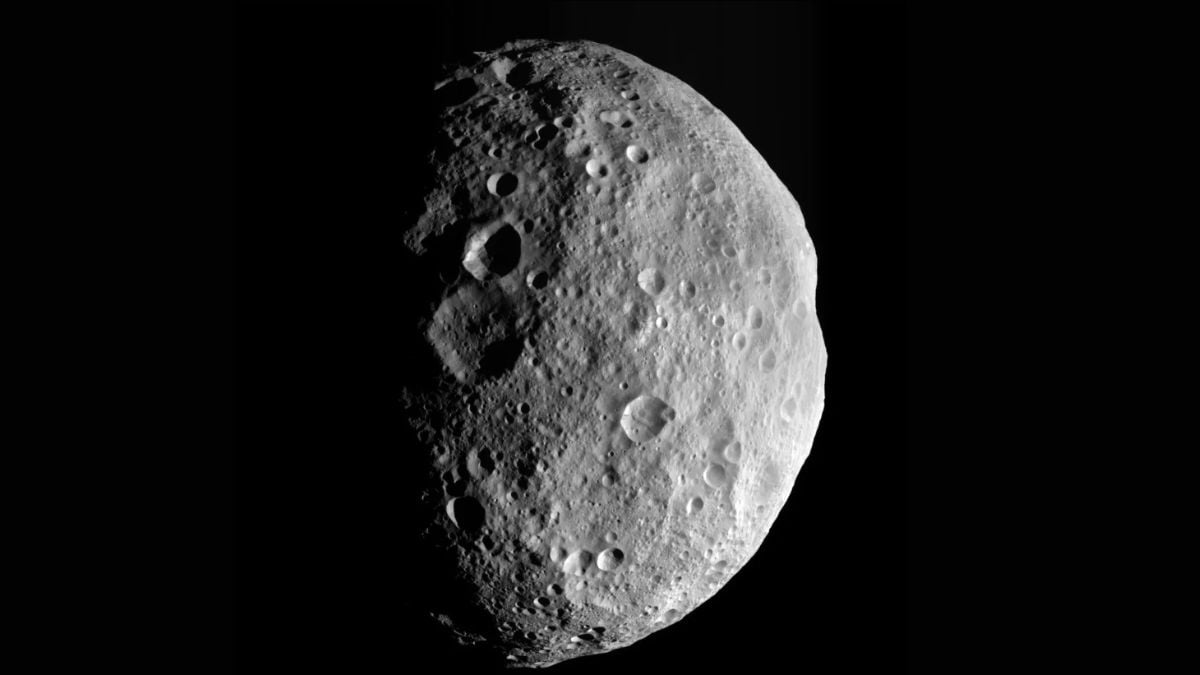

NASA’s Dawn spacecraft, which orbited the asteroid Vesta in 2012, captured images of mysterious gullies on its surface, raising questions about their origins. The asteroid, known for its craters, also features channels that seem to contradict the harsh vacuum conditions of space. According to a study, researchers have proposed that brief liquid flows, possibly resulting from briny water, might explain these formations. Lab experiments have been conducted to simulate the conditions, shedding light on a process previously unconfirmed.
The study was published in the Planetary Science Journal. As per the official blog of NASA, researchers at NASA’s Jet Propulsion Laboratory (JPL) used the Dirty Under-vacuum Simulation Testbed for Icy Environments (DUSTIE) to replicate conditions on Vesta following meteoroid impacts. These experiments revealed that while pure water freezes almost instantly in vacuum conditions, salty liquids remain fluid for longer periods. Lead author Michael J. Poston of the Southwest Research Institute noted in a statement that briny solutions could remain liquid for up to an hour, sufficient to create the observed gullies.
The study explored the possibility that impacts on Vesta exposed subsurface brine, causing temporary flows before freezing. According to Jennifer Scully, planetary scientist at JPL, in a statement, impacts could trigger the release of liquid, which would remain active long enough to carve surface features. Speaking to reporters, Scully highlighted that frozen “lids” formed on brines stabilised the liquid beneath, enabling it to flow for extended periods.
The findings align with observations of other celestial bodies, such as Mars and Jupiter’s moon Europa, where similar processes might occur. The research also builds on discoveries made during the Dawn mission, which indicated the presence of brines on Ceres, another body in the asteroid belt. While frozen brine on Vesta has yet to be confirmed, these experiments suggest new possibilities for understanding the geologic activity on airless worlds.
Inter Milan continued their march towards a second straight Serie A title with…
A combustion engine makes power by compressing fuel and air in a cylinder, then igniting…
Ever wondered what happens to your body when you take those trendy ice baths? Scientists…
A new chapter in the Guilty Gear universe is set to take place as GUILTY…
Trent Boult at the press conference© BCCI Following the loss against Gujarat Titans…
Older fans of the Forza franchise will recognize Fujimi Kaido. For the younger gamers out…